Continuous Falling Of the Rupee Value Against the USD & Soaring Inflation Will Definitely Take India To A Situation Like Sri Lanka, But The Indian Government Is More Busy In Horse Trading
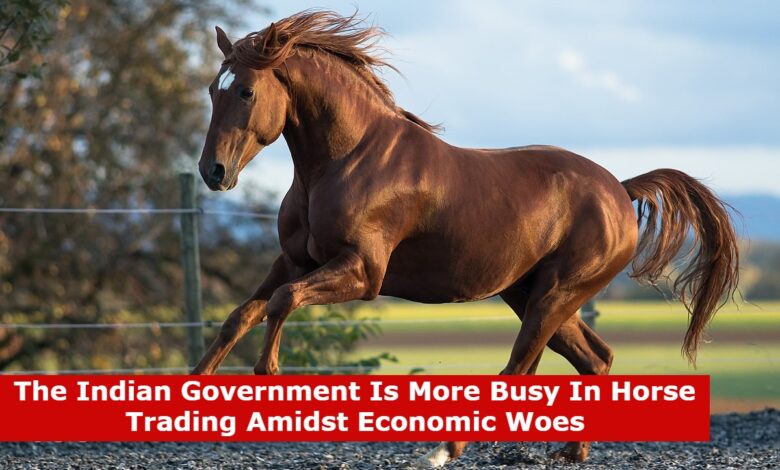
Continuous Falling Of the Rupee Value Against the USD & Soaring Inflation Will Take India To Situation Like Srilanka, But the Indian Government Is More Engaged In Horse Trading
HIGHLIGHTS
- The continuous decline in the rupee and soaring inflation have been staggering since the beginning of the year.
- Records of high rates of cooking gas LPG have added to the woes of the people.
- Government focus on horse-trading; the Union Minister comes up with GST charges for “horse-trading”?
- Is India also leading the same path Sri Lanka is going through?
India, like other countries, is currently coping with several crises due to Russia’s invasion of Ukraine. The primary concerns for the entire country are inflation, unemployment, electricity shortages, and supply chain disruptions.
The prolonged conflict between Russia and Ukraine has undoubtedly impacted worldwide disruption, leading to an increase in global commodity prices and influencing the monetary policies of numerous central banks. This situation has resulted in severe inflationary pressure on the global economy, with commodity prices skyrocketing due to sanctions placed on Russia, causing supply-chain disruptions. The rupee’s fall against the dollar has been a big failure.
The southern neighbour’s economic crisis has been brewing for several years, and recent geopolitical developments have driven the country into instability and bankruptcy. On top of that, the main issue is that imports surpass exports.
Sri Lanka is in the grip of its worst economic crisis in decades, as high foreign debt repayments and a massive trade deficit have rendered the country unable to import essential goods such as milk powder and cooking gas. Protesters have taken to the streets calling for the resignation of the country’s President, Gotabaya Rajapaksa, who has fled the country.
The above-mentioned is an overview of the major issues that contributed to the Lankan Crisis. But Is India also leading the same path Sri Lanka is going through?
If India does not strengthen its measures to stabilize its economy and if trading in horses is more important for the government than stabilizing the economy, then India will definitely face such an economic crisis as Sri Lanka is facing an unprecedented economic and political turmoil.
On most criteria, India is not that far behind Sri Lanka. Many point to Sri Lanka’s twin deficits — fiscal and current account deficits — as the primary source of the crisis. India is not that different on both counts.
The Indian rupee has been falling in value recently, reaching a record low of 79.03 versus the US dollar on Wednesday. It has created a debate among analysts over whether the domestic currency will continue to fall due to bad fundamentals.
Since January of this year, the rupee has fallen approximately 6%. However, it recovered from its record low on Thursday, rising 13 paise to 78.90 against the dollar.
With the economy suffering from rising inflation and the prices of ordinary commodities skyrocketing, this is a double blow for the general public.
Why Is The Rupee Falling?
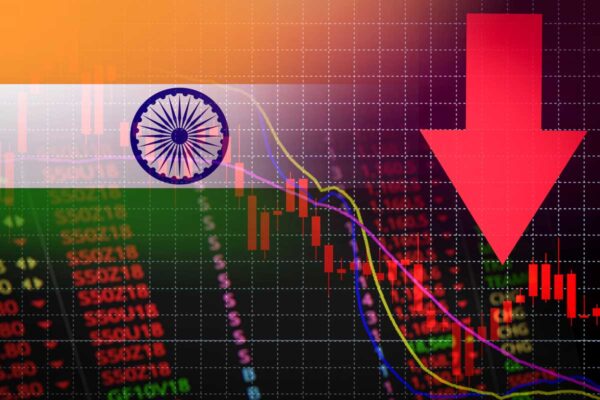
The rupee has fallen roughly 6.5 percent since the beginning of the year, and the value of the Indian rupee to the US dollar is determined by demand and supply. When the US dollar is in strong order, the Indian rupee falls in value, and vice versa.
The rupee’s continuous decline is primarily due to high crude oil prices, a strong dollar abroad, and international capital outflows.
The rupee has fallen since early this year, owing to supply chain delays caused by the Russia-Ukraine conflict, global economic challenges, inflation, and rising crude oil costs, among other factors.
Furthermore, there have been significant foreign capital outflows from domestic markets, with foreign institutional investors (FIIs) selling shares worth $28.4 billion this year, outpacing the $11.8 billion sell-off recorded during the 2008 Global Financial Crisis. So far this year, the rupee has fallen 5.9 per cent against the US dollar.
As money flows out of India, the rupee-dollar exchange rate falls, devaluing the rupee. Such depreciation puts significant pressure on already high crude and raw material import prices, paving the way for higher imported inflation and manufacturing costs, in addition to rising retail inflation.
How does a weak rupee affect you and the economy?
India pays in US dollars since it relies substantially on imports such as crude oil, commodities, and electronics. If the value of the rupee falls, it will have to pay more for the same amount of commodities. Under these conditions, the cost of raw materials and manufacturing rises, which is passed on to customers.
High oil prices and a weaker rupee would further intensify inflationary pressures in the economy.
Is the rupee going to fall further?
Several analysts anticipate the rupee will continue to fall against the dollar in the coming days as oil prices rise and the FII sell-off continues. According to analysts, the fundamentals of the Indian economy have deteriorated.
EXPLAINED: How a falling rupee affects the economy and the average person’s pocket.
Rupee Vs Dollar: When the rupee declines against the US dollar, it is terrible news for the economy and has a direct impact on the cost of living.
Household expenses increases.
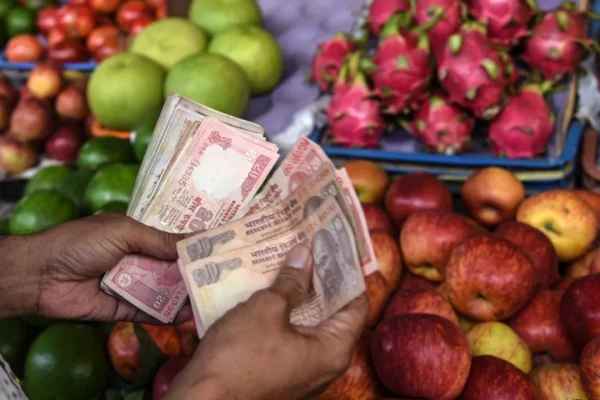
Fuel prices – diesel, gasoline, and cooking gas – will rise more since India largely relies on crude oil imports. “Increased shipping costs will have an indirect impact on the products you use every day.”
“Their prices will escalate as the cost of producing and transporting oil rises. Electronics are also expected to be costly. Devices such as mobile phones, computers, televisions, and solar plates, among other household electrical goods, would cost you extra because many of their components are imported, “Adhil Shetty, CEO of BankBazaar, elaborated.
Education and international travel
Foreign travel and education become more expensive when the rupee falls in value. This is because a person will have to provide more Rupees for every Dollar exchanged. It means that students studying abroad or planning a foreign trip will have to spend more money.
What does a week rupee represent regarding trade, imports, and exports?
When the rupee falls in value versus the dollar, exporters benefit (for example, software companies, consumer goods exporters, and so on) because exports become more profitable because they earn more rupees when exchanging the dollar.
However, importers suffer since they must pay more to buy the same quantity that they did before the rupee fell in value. Oil and gas, food and beverages, and other industries that import raw materials or are capital intensive, for example, suffer the most when the rupee falls in value.
The current account deficit is widening.
Because India imports more than 80% of its oil, a weakening rupee will exacerbate the current account deficit (CAD), a trade statistic in which a country’s imports of goods and services exceed its exports.
When the CAD expands, India must draw on its foreign exchange reserves to cover the deficit without dollar inflows from foreign investors. Foreign investors have withdrawn more than $32 billion from Indian equities in the last year, making it Asia’s worst performance behind Taiwan.
In India, rising inflation may be a “pain point” for the economy.
As an import-dependent country, India may feel the heat of a declining rupee in an inflationary environment, as it stands to further damage household spending decisions.
The increasing trade imbalance in India, along with capital outflows, creates significant concerns for the rupee.
These forces, together with high commodity prices, have resulted in sustained inflationary pressures across geographies, posing a severe risk to global economic prospects.
Food inflation in June increased to 12.41 per cent, up from 10.89 per cent the previous month. Vegetable inflation was 56.75 per cent, up from 56.36 per cent previously.
Regarding fuel prices in India, the cost of petrol in Delhi is Rs 96.72 per litre, while the cost of diesel is Rs 89.62 per litre. The cost of one litre of petrol in Mumbai is Rs 111.35 per litre, while diesel is Rs 97.28 per litre.
The second price increase in home cooking gas cylinders, often called LPG cylinders, by Rs 50 in two months will add to your expenses. Already hammered by growing prices for necessities ranging from fruits and vegetables to edible oil and power, record high LPG prices have added to the general public’s woes.
“LPG is smokeless, yet it still brings us tears,” M Mallika, a 38-year-old homemaker in Tenali, Andhra Pradesh, said.
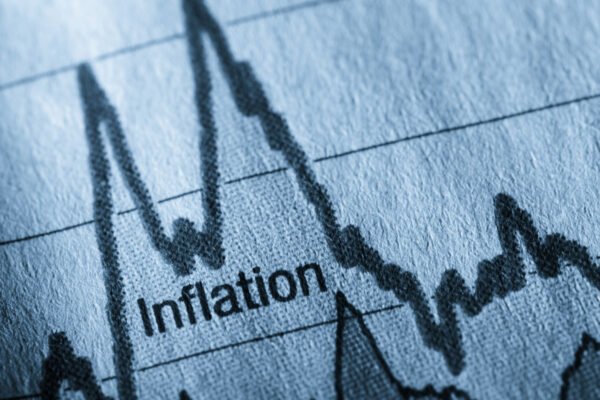
Price increases have adversely affected lower-income workers such as housemaids, drivers, security guards, daily wagers, marketers, and waiters, who earn between Rs 10,000 and 15,000 per month. The cost of cooking fuel alone accounts for almost 10% of their wages.
View Point
Excessive borrowing is undoubtedly one of the primary causes of the current problem, and this is not the first time Sri Lanka has faced an economic crisis; 2009 and 2016 are examples. However, it is without a doubt the worst to date.
While the country was still recovering from the impact of Covid-19, the war in Ukraine has considerably worsened the suffering of the common man. The battle has disrupted the global supply chain, pushing the prices of crude oil and other commodities.
However, the headline that has gotten everyone’s attention is the INR’s depreciation, which has made it the poorest performing Asian currency.
The rupee continues to tumble to historic lows, which may impact on your food, education, healthcare, and other expenses. Higher fuel prices will cause the prices of other commodities to rise. With rising fuel prices, transportation expenses increase, and the general public feels the pinch as prices for necessities rise. It affects an individual’s spending ability.
All of these factors put further strain on people’s pockets in a country with an import-oriented economy.
Horse-trading in Indian politics
Amidst the ongoing situation, the government is busy with horse-trading. Horse-trading is a word used frequently in Indian politics. It appears to refer to an instance in which one political party reportedly poaches ministers or leaders from other parties to destabilize a government.
But why trade horses? That’s because purchasing and selling horses can occasionally include some deception. A merchant can sell a faulty horse without informing the customer of the issue. The latter will pay the money only to discover that the horse is injured. As a result, the phrase is often used to characterize suspected corrupt acts in politics, such as under-the-table negotiations, the poaching of political leaders, and vote dealing.
The BJP is engaging in horse-trading in Maharashtra, just as it did in Madhya Pradesh and Rajasthan, according to Congress leader and Chief Minister Ashok Gehlot on Saturday. He believes the current political developments in Maharashtra are a poor omen for democracy.
He claimed the BJP engaged in horse-trading in Madhya Pradesh, Rajasthan, and now Maharashtra. “It’s a bad omen for the country and democracy.” People should be aware of these issues.”
National Conference leader Omar Abdullah said on Thursday that horse-trading is nothing new in Indian politics and that the BJP is repeating the mistakes made by Congress while in power at the Centre.
“This isn’t anything new.” Misuse of Rajbhawan, traitors and MLA horse-trading Wasn’t this what happened to us in 1984? The BJP is repeating the mistakes made by Congress. This has been going on for a long time.”
Finance Minister Nirmala Sitharaman had been slammed on social media after a video showing the Union Minister incorrectly mentioning GST on “horse-trading” rather than “horse-racing.” The opposition is now attacking the minister and her party, claiming that she unwittingly accepted that the saffron party engages in MLA horse-trading.
Sharing the video of the blooper, Mamata Banerjee’s All Indian Trinamool Congress wrote: “Is BJP searching for a recurrent source of revenue?” Nirmala Sitharaman made a statement GST on “horse trading” after destroying the economy in every conceivable way!”
Buying by MLAs had grown so prevalent that the Finance Minister admitted the fact when she proposed imposing GST on horse trading.
Just like Sri Lanka’s economy is burdened by huge debts and poor government policies and implementations and whatnot, India’s economic situation is not different. In India, the policies and amendments are made one day and then thrown at the common person’s face the next day, and they have no other option but to follow them.
But this current situation has been prevailing for a long time, and if this continues in the long run, then we will face the same crisis as our neighbour Sri Lanka is going through.
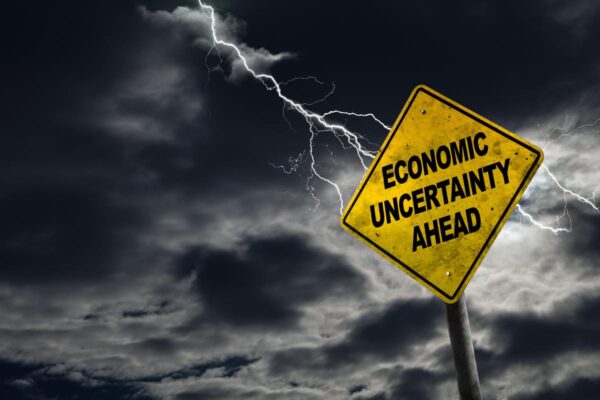
It is a great initiative to extend a helping hand to the nations going through a crisis, but it must not forget their economic situation. The decisions and policymakers must take a deep look into India’s economy before it’s too late. The Indian people have already understood the poor policy and amendments implementation from the past experiences of Demonetization, GST, NRC, and whatnot!
The situation is so difficult that India’s central bank, the Reserve Bank of India (RBI), has shifted its emphasis from encouraging growth to reducing the effects of inflation. Ordinary consumers in India are among the worst affected by inflation, as they struggle to manage their daily expenses with limited purchasing power on a minimum salary.
The most critical failure that India must avoid is not economics, but the social contract. We must be sceptical of populist plans that promise free meals and easy solutions.
The immediate circumstances that caused Sri Lanka’s crisis were President Gotabaya Rajapaksa’s policies, which typically adopted easy solutions that don’t work in most countries – lowering taxes without a plan to increase growth, printing money, restricting imports, and avoiding reforms.
Sri Lanka has failed horribly in terms of sustainable policy. Any drastic action taken without proper planning would undoubtedly result in the breakdown and collapse of that policy and eventually of the economy. Having ambitious goals for one’s country is admirable, but if it comes at the expense of risking people’s lives, tragedy begins. If the government does not take proper precautions, this crisis will occur in India.
The USSR no longer exists; Venezuela, despite its oil wealth, is in grave problems; China used to be poorer than India until they began encouraging markets in 1979, and our own choice of socialism led to the 1991 disaster.
Furthermore, Even In an interview in 2019, Prime Minister Narendra Modi stated that India‘s goal is to become a USD 5 trillion economy and global powerhouse by 2024-25. To reach $5 trillion in five years, from $3.1 trillion in 2021-22, 61 per cent growth is required. Such expansion is not without precedent.
But if the government can’t focus on those factors which hamper the Indian economy, then How will they achieve the target they set to attain a $5 trillion economy?
Real GDP growth, inflation, and rupee depreciation will all have a significant impact on accomplishing the goals. A robust real GDP growth rate, stable and low inflation and a stable depreciation all reflect favourably on the economy.
India has a federal framework in which states share responsibility for economic progress. However, there is an increasing trend of municipal officials acting irresponsibly by announcing freebies and reviving plans (such as the old pension scheme) that lack financial discipline.
This issue was raised a few months ago, but it has had little effect on power-hungry politicians. A recession could be triggered by rising interest rates and a high level of global borrowing. Despite a little slowing, inflation is not going away anytime soon.
Transportation has become more expensive due to the spillover effect of rising fuel costs. It has added to the woes of consumers who now pay significantly more for their regular food products than they did a year ago.
Soaring prices = decrease in savings, and inflation has had a negative influence on the general public.
As our neighbour, Sri Lanka, slides into an economic and political crisis, and common people there suffer, India must use the opportunity to learn from their mistakes, for we, too, have made some of the same mistakes in the past and continue to do so in the present. The continuous falling of the rupee and soaring inflation will take India to a situation like Sri Lanka, but the Indian Government is more interested in Horse trading.
Conclusion:
Talking about the way forward, we must wisely analyze and formulate economic policies that “do not impose a tax burden on the ordinary man” while still preserving the financial system must always be valued. Populist policies motivated by a desire for votes and power will inevitably fail because everything in an economy does have a cost.
Instead of wasting time on such activities as horse trading and exporting ban, etc., the government must address the more critical issues prevailing in the economy, which need the utmost attention, or else India would face the same crisis as Sri Lanka is going through right now.
Furthermore, the government should make a deliberate effort to prioritize job development. Job generation is one of the country’s most pressing development concerns. There is a strong correlation between job creation and economic growth, and increased job creation will ensure that the Indian economy maintains its solid economic growth trajectory.
At this point, there is a need to resolve high commodity prices and raw material shortages in order to sustain domestic demand and private investment. Because India is currently experiencing cost-push inflation, the government’s supply-side initiatives will significantly support inflationary pressures.
The government should spend more money boosting citizens’ health and education rather than buying arms and developing posh “smart cities” with slums and poverty.
Though we cannot control some variables such as rising crude oil prices and trade disputes, we can take actions to strengthen the rupee or, at the very least, avoid future declines in the value of our currency. Steps to maintain investor trust, attract more FDI, reduce reliance on imports by boosting domestic manufacturing, and spend more on the development of renewable energy resources to reduce crude oil imports will all contribute to the strengthening of the rupee.
Edited by Prakriti Arora




